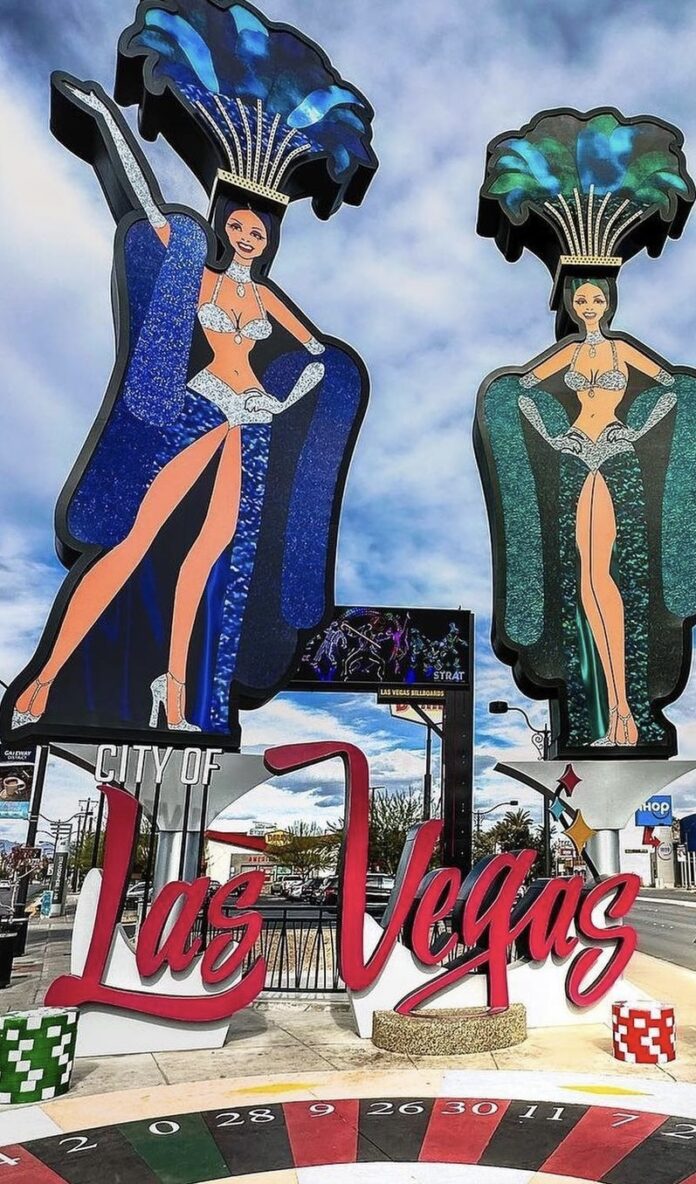Sin City. A city heralded as a paradise for uncensored fun and guilty pleasure, conceals the truth for those that work to make this “paradise” a reality.
Las Vegas is where peacock feathers and extravagant costumes decorate Showgirls’ bodies as they make their signature walk down the Vegas strip. Tourists from around the world come to Las Vegas to be mesmerized by glimmer, lights and lust, but they rarely stop to notice the true life behind Vegas Showgirls.
“People forget that we are humans. We are sentimental beings,” said Victoria, a showgirl from the Las Vegas strip. Las Vegas is consumed by such a high rate of sexual tourism and naked consumerism that, according to the showgirl, consent and respect for women’s bodies are not always considered.
“A man gave us both 100 dollars each, then he felt entitled to touch us,” said Victoria. In her experience, consent becomes transactional. It is taken out of the equation because of her clothing. “He was befuddled when I smacked his hand and told him not to touch me,” she said. This interaction is not the first nor the last of its kind.
According to Ariel Santos, a woman studies professor at the University of Nevada, Las Vegas (UNLV), this behavior exemplifies rape culture. It follows the idea that showgirls entice men because they dress in revealing clothing, consequently giving men the right to interact with them in sexual behavior.
This has been a consistent experience for showgirls regardless of the decade. According to Dolly Kelepecz, a UNLV professor and a showgirl from the 1970s to the 1990s, men constantly offered to trade fancy jewelry, vacations and money for sex during her time working as a showgirl at the Strip’s Casinos and hotels.
“When people found out I worked as a showgirl, there was always that condescending ‘you are a nasty girl’ reaction,” said Kelepecz.
The harassment showgirls face is also a daily battle. According to Victoria, they are constantly belittled and insulted by the Vegas audience. The public assumes they are sex workers and treats them as sexual objects.
According to Santons, people tend to value and devalue specific industries, and being adjacent to the sex industry becomes moralized. The public’s perceived judgments about the showgirl’s work industry inevitably determine their human value.
“In a capitalistic society, we are all working to make money, but we judge those who are capitalizing off of their body, even when someone else is clearly willing to pay for it,” said Santos.
Misogyny is also visible in women’s attitudes toward showgirls on the strip. According to Victoria, women who do not work in the industry are the most hurtful and judgemental people.
“He doesn’t want to talk to you. You are fucking ugly,” is an example of the comments Victoria typically hears from other women while at work. “It feels like we are doing something we shouldn’t when there is actually nothing wrong with our job,” said Victoria.
Santos explains that these reactions are a reflection of women’s internalized misogyny.
“It is a knee-jerk reaction to become possessive over your partner and blame the object of desire as opposed to the partner who is supposed to be upholding whatever parameters you have set for your relationship,” said Santos.
Sin City’s famously marketed sexual paradise is not heaven for everyone.
“When everything is so nakedly commercialized, there is something honest about it, but something inhumane about living through it as well,” Santos commented.


Moving to Mpls from Vegas in 1978, everyone assumed I was a showgirl. As a prospective employer would look over my resume, he would say, “what casino did you dance at?” Resume had nothing in that area, but he was positive it did. When I went out at night, I made a point of never saying where I was from.